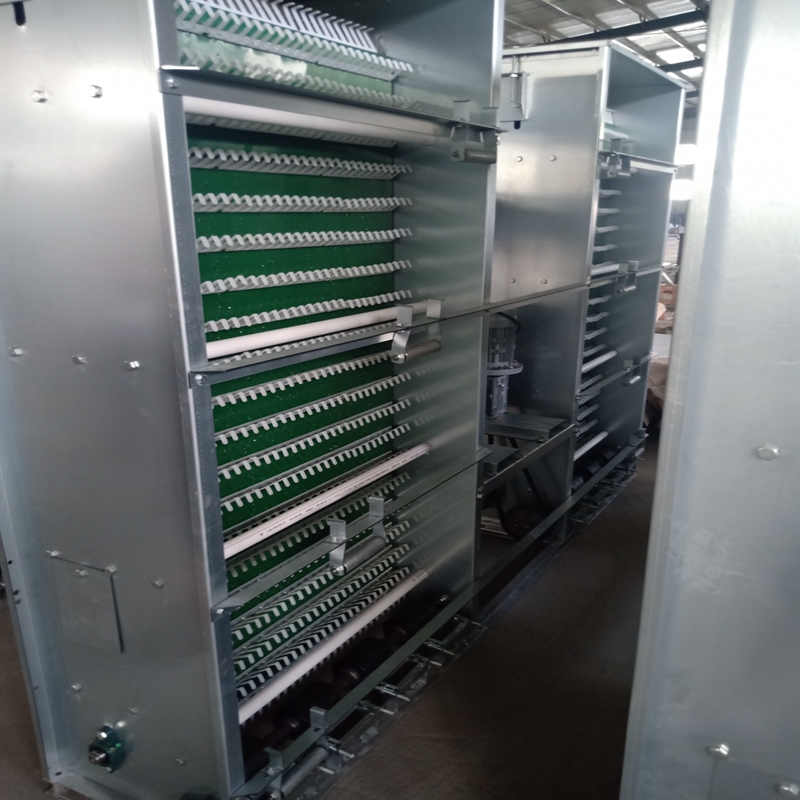Innovative Solutions for Automated Broiler Chicken Housing Systems
Nov . 26, 2024 00:31 Back to list
Innovative Solutions for Automated Broiler Chicken Housing Systems
The Rise of Automatic Broiler Chicken Cages Revolutionizing Poultry Farming
The poultry industry has long been a cornerstone of agricultural economies globally. As demand for broiler chickens continues to rise due to an increasing population and changing dietary preferences, the need for more efficient, sustainable, and humane farming methods has never been more critical. One of the most innovative solutions to these challenges is the development and implementation of automatic broiler chicken cages. These advanced systems are transforming the landscape of poultry farming by enhancing productivity, improving animal welfare, and optimizing resource use.
Efficiency and Productivity
At the heart of the automatic broiler chicken cage system is its ability to significantly enhance operational efficiency. Traditional broiler farming often requires extensive manpower for feeding, watering, and monitoring the health of the birds. In contrast, automatic systems streamline these processes through the integration of technology. Automatic feeders and waterers ensure that chickens receive the appropriate nutrition and hydration at regular intervals, reducing labor costs and minimizing human error.
Moreover, these systems are designed to maximize space utilization, allowing farmers to house more birds in a given area without compromising their welfare. By optimizing the growth environment, farmers can achieve faster weight gain and lower feed conversion ratios, leading to increased output and profitability. Consequently, automatic broiler chicken cages represent a modern solution to the age-old challenges of poultry farming.
Animal Welfare
Beyond efficiency, animal welfare is a significant concern in poultry farming. In traditional setups, overcrowding and inadequate living conditions can lead to stress, illness, and high mortality rates. However, automatic broiler chicken cages are designed with the well-being of the birds in mind. These systems provide adequate space, ventilation, and controlled environments to ensure that chickens are comfortable and have access to the essentials they need to thrive.
Automatic systems also allow for better monitoring of the flock's health. Sensors and advanced technologies can alert farmers to potential issues, such as variations in temperature, humidity, or unusual behaviors that may indicate illness. By enabling timely intervention, these solutions not only improve the overall health and welfare of the birds but also contribute to more sustainable farming practices.
automatic broiler chicken cage

Environmental Sustainability
The poultry industry faces mounting pressure to enhance its sustainability practices. Automatic broiler chicken cages contribute to this goal by optimizing resource use and reducing waste. For instance, precise control over feed and water consumption helps minimize excess waste, which is a significant concern in traditional farming methods. This precision also translates into lower feed costs for farmers, further enhancing the economic viability of poultry production.
Moreover, many modern automatic systems incorporate eco-friendly technologies, such as waste management solutions that convert chicken manure into bioenergy or compost. These innovations not only help reduce the environmental impact of poultry farming but also create opportunities for farmers to diversify their income streams through renewable energy projects or organic fertilizer production.
Challenges and Future Perspectives
While the advantages of automatic broiler chicken cages are evident, the transition to such systems is not without challenges. Initial investment costs can be considerable, posing a barrier for small-scale farmers. Additionally, there is a need for training and education on the use of advanced technologies to ensure that farmers can maximize the benefits offered by these systems.
Nevertheless, as technological advancements continue and the push for sustainable, efficient agriculture grows stronger, the future of automatic broiler chicken cages looks promising. Research and development in this field are likely to bring even more sophisticated solutions to the forefront, addressing the needs of both farmers and consumers.
Conclusion
In conclusion, automatic broiler chicken cages represent a significant advancement in poultry farming, marrying productivity, animal welfare, and environmental sustainability. As the global demand for chicken meat continues to increase, embracing innovative technologies like these will be crucial for the industry’s growth and the responsible stewardship of agricultural resources. By investing in these systems, farmers not only enhance their operational efficiency but also contribute to a more sustainable and humane future for poultry farming. The journey towards modernizing agriculture is well underway, and automatic broiler chicken cages are at the forefront of this critical evolution.
-
Automatic Feeding Line System-Pan Feeder Nipple Drinker|Anping County Yize Metal Products Co., Ltd.
NewsJul.29,2025
-
Hot Sale 24 & 18 Door Rabbit Cages - Premium Breeding Solutions
NewsJul.25,2025
-
Automatic Feeding Line System Pan Feeder Nipple Drinker - Anping County Yize Metal Products Co., Ltd.
NewsJul.21,2025
-
Automatic Feeding Line System Pan Feeder Nipple Drinker - Anping County Yize Metal Products Co., Ltd.
NewsJul.21,2025
-
Automatic Feeding Line System - Anping Yize | Precision & Nipple
NewsJul.21,2025
-
Automatic Feeding Line System - Anping Yize | Precision & Nipple
NewsJul.21,2025






